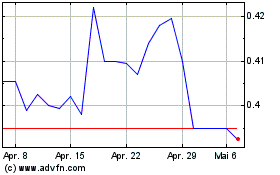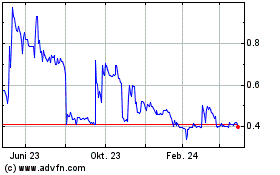- First study to find direct evidence that therapeutic gene is
transferred from the injected eye to the uninjected contralateral
eye of primates
- Findings support mechanism for bilateral visual improvement
with unilateral GS010 gene therapy, which was consistently observed
in LHON subjects in the REVERSE and RESCUE Phase III trials
Regulatory News:
This press release features multimedia. View
the full release here:
https://www.businesswire.com/news/home/20191008006015/en/
Figure 1: Presence of GS010 DNA in the
visual and cerebral systems of test monkeys (Graphic: Business
Wire)
GenSight Biologics (Euronext: SIGHT, ISIN: FR0013183985, PEA-PME
eligible), a biopharma company focused on discovering and
developing innovative gene therapies for retinal neurodegenerative
diseases and central nervous system disorders, today reported
positive proof of GS010 DNA transfer from one eye to the other eye
following unilateral intravitreal injection of primates. In a
non-clinical study to investigate the local biodistribution of
GS010, tissue samples from the non-injected eye of monkeys that had
been unilaterally injected with GS010 were found to contain GS010
DNA three months after injection, indicating the expression of the
therapeutic gene in the contralateral eye
“These results join a growing body of evidence suggesting the
two eyes communicate not only in disease, but also in response to
treatment,” said David J. Calkins, PhD, O’Day Professor,
Vice Chair and Director for Research Vanderbilt Eye Institute,
Vanderbilt University Medical Center, Nashville, Tennessee, United
States. “With the new understanding these results provide, we can
move forward with more precise treatments.”
Performed by CiToxLAB France, a leading CRO for preclinical
research, the study was initiated by GenSight to investigate
potential mechanisms behind the unexpected contralateral effect
seen in two of GS010’s Phase III trials, REVERSE and RESCUE. As
previously reported, both trials, which this year completed the
two-year follow-up of patients unilaterally injected with GS010,
documented sustained bilateral improvements in LogMAR mean visual
acuity. The contralateral effect did not conform to expectations
for gene therapies administered to only one eye.
The CiToxLAB study uses a purpose-bred species of monkeys, which
is favored by scientists and accepted by regulatory bodies due to
physiological similarities with humans. For testing at three
months, a control monkey was given an intravitreal injection of
saline solution in its right eye and was not injected in its left
eye. Three test monkeys were given an intravitreal injection of
GS010 in their right eyes and not injected in their left eyes. The
dosage of GS010 was calibrated to be the allometric equivalent of
that used in the GS010 Phase III trials. Three months after the
injection, tissues from the right and left eyes were sampled and
tested using a qPCR test which had been validated in a dedicated
prior study. The highly sensitive and accurate test contains a
protocol that specifically targets a portion of the GS010 DNA and
can detect the GS010 DNA matrix.
As expected, the qPCR test did not detect the GS010 DNA in any
of the tissue samples from the control monkey unilaterally injected
with saline solution. Also as expected, the test was able to
detect, and in many cases, quantify the presence of GS010 DNA in
tissue samples from GS010-injected right eye. Remarkably the qPCR
test was also able to detect, and even quantify, viral DNA vector
in the contralateral eye, which had
received no injection.
Note: qPCR test used to detect GS010 DNA was validated in a
dedicated study conducted prior to the monkey study. The graph
depicts the number of monkeys whose tissues contained DNA that were
within the sensitivity of the test to detect. In some cases, the
levels were above the quantifiable threshold.
DNA was detected and quantified in the anterior segment, the
retina, as well as the optic nerve of the non-injected
contralateral eye. In addition, DNA was detected and quantified in
the optic chiasm, suggesting that the anatomic route taken by the
viral vector DNA from the treated eye to the non-treated eye was
via the optic nerves and chiasm.
“The identification of viral vector DNA in the contralateral
uninjected eye is an important observation with broader relevance
to the design of gene therapy trials for optic neuropathies,” noted
Dr. Patrick Yu-Wai-Man, Senior Lecturer and Honorary
Consultant Ophthalmologist at the University of Cambridge,
Moorfields Eye Hospital, and the UCL Institute of Ophthalmology,
London, United Kingdom. “Although the non-human primate study was
not designed to determine the underlying mode of transfer, the
presence of viral vector DNA in the optic chiasm and optic nerve of
the contralateral uninjected eye points towards a possible
diffusion pathway. Further experimental work will clarify these
interesting findings.”
“We are excited about these scientifically significant results,”
commented Bernard Gilly, Co-founder and Chief Executive
Officer of GenSight. “Moreover, they vindicate the company’s
position that the unexpected bilateral improvements seen in the
REVERSE and RESCUE trials have a solid scientific basis. The
results help provide a compelling argument in support of GS010’s
marketing authorization application.”
GenSight is working with its panel of scientific experts to
prepare the findings for submission to a peer-reviewed journal
later this year.
Dr. Yu-Wai-Man will discuss these findings when he
presents RESCUE results at the 2019 annual meeting of the American
Academy of Ophthalmology in San Francisco, CA:
Session Date: Sunday, October 13
Paper Session: OP04 Neuro-Ophthalmology Original Paper
Session Time: 2:00 PM to 3:15 PM Location: South 152
Presenter: Patrick Yu-Wai-Man, FRCOphth MBBS PhD
Presentation time: 3:00 p.m.
About GenSight Biologics
GenSight Biologics S.A. is a clinical-stage biopharma company
focused on discovering and developing innovative gene therapies for
retinal neurodegenerative diseases and central nervous system
disorders. GenSight Biologics’ pipeline leverages two core
technology platforms, the Mitochondrial Targeting Sequence (MTS)
and optogenetics, to help preserve or restore vision in patients
suffering from blinding retinal diseases. GenSight Biologics’ lead
product candidate, GS010, is in Phase III trials in Leber
Hereditary Optic Neuropathy (LHON), a rare mitochondrial disease
that leads to irreversible blindness in teens and young adults.
Using its gene therapy-based approach, GenSight Biologics’ product
candidates are designed to be administered in a single treatment to
each eye by intravitreal injection to offer patients a sustainable
functional visual recovery.
About GS010
GS010 targets Leber Hereditary
Optic Neuropathy (LHON) by leveraging a mitochondrial targeting
sequence (MTS) proprietary technology platform, arising from
research conducted at the Institut de la Vision in Paris, which,
when associated with the gene of interest, allows the platform to
specifically address defects inside the mitochondria using an AAV
vector (Adeno-Associated Virus). The gene of interest is
transferred into the cell to be expressed and produces the
functional protein, which will then be shuttled to the mitochondria
through specific nucleotidic sequences in order to restore the
missing or deficient mitochondrial function.
About Leber Hereditary Optic Neuropathy (LHON)
Leber Hereditary Optic Neuropathy (LHON) is a rare maternally
inherited mitochondrial genetic disease, characterized by the
degeneration of retinal ganglion cells that results in brutal and
irreversible vision loss that can lead to legal blindness, and
mainly affects adolescents and young adults. LHON is associated
with painless, sudden loss of central vision in the 1st eye, with
the 2nd eye sequentially impaired. It is a symmetric disease with
poor functional visual recovery. 97% of patients have bilateral
involvement at less than one year of onset of vision loss, and in
25% of cases, vision loss occurs in both eyes simultaneously. The
estimated incidence of LHON is approximately 1,400 to 1,500 new
patients who lose their sight every year in the United States and
Europe.
About REVERSE and RESCUE
REVERSE and RESCUE are two separate randomized, double-masked,
sham-controlled Phase III trials designed to evaluate the efficacy
of a single intravitreal injection of GS010 (rAAV2/2-ND4) in
subjects affected by LHON due to the G11778A mutation in the
mitochondrial ND4 gene.
The primary endpoint will measure the difference in efficacy of
GS010 in treated eyes compared to sham-treated eyes based on
Best‑Corrected Visual Acuity (BCVA), as measured with the ETDRS at
48 weeks post-injection. The patients’ LogMAR (Logarithm of the
Minimal Angle of Resolution) scores, which are derived from the
number of letters patients read on the ETDRS chart, will be used
for statistical purposes. Both trials have been adequately powered
to evaluate a clinically relevant difference of at least 15 ETDRS
letters between treated and untreated eyes adjusted to
baseline.
The secondary endpoints will involve the application of the
primary analysis to best‑seeing eyes that received GS010 compared
to those receiving sham, and to worse‑seeing eyes that received
GS010 compared to those that received sham. Additionally, a
categorical evaluation with a responder analysis will be evaluated,
including the proportion of patients who maintain vision (<
ETDRS 15L loss), the proportion of patients who gain 15 ETDRS
letters from baseline and the proportion of patients with Snellen
acuity of >20/200. Complementary vision metrics will include
automated visual fields, optical coherence tomography, and color
and contrast sensitivity, in addition to quality of life scales,
bio‑dissemination and the time course of immune response. Readouts
for these endpoints are at 48, 72 and 96 weeks after injection.
The trials are conducted in parallel, in 37 subjects for REVERSE
and 39 subjects for RESCUE, in 7 centers across the United States,
the UK, France, Germany and Italy. Week 96 results were reported in
2019 for both trials, after which patients were transferred to a
long-term follow-up study that will last for three years.
ClinicalTrials.gov Identifiers: REVERSE: NCT02652780 RESCUE:
NCT02652767
About REFLECT
REFLECT is a multi-center,
randomized, double-masked, placebo-controlled study to evaluate the
safety and efficacy of bilateral injections of GS010 in subjects
with LHON due to the NADH dehydrogenase 4 (ND4)
mutation.
The trial planned to enroll 90
patients with vision loss up to 1 year in duration and will be
conducted in multiple centers in Europe and in the US.
In the active arm, GS010 will
be administered as a single intravitreal injection to both eyes of
each subject. In the placebo arm, GS010 will be administered as a
single intravitreal injection to the first affected eye, while the
fellow eye will receive a placebo injection.
The primary endpoint for the REFLECT trial is the BCVA reported
in LogMAR at 1-Year post-treatment in the
second‑affected/not‑yet‑affected eye. The change from baseline in
second‑affected/not‑yet‑affected eyes receiving GS010 and placebo
will be the primary response of interest. The secondary efficacy
endpoints include: BCVA reported in LogMAR at 2-Years
post-treatment in the second‑affected/not‑yet‑affected eye compared
to both placebo and the first‑affected eye receiving GS010, OCT and
contrast sensitivity and quality of life scales. The first subject
was treated in March 2018, and enrolment was completed in July
2019, ahead of schedule.
ClinicalTrials.gov Identifiers: REFLECT: NCT03293524
View source
version on businesswire.com: https://www.businesswire.com/news/home/20191008006015/en/
GenSight Biologics Thomas Gidoin Chief Financial Officer
tgidoin@gensight-biologics.com +33 (0)1 76 21 72 20
RooneyPartners Media Relations Marion Janic
mjanic@rooneyco.com +1-212-223-4017
Solebury Trout US Investor Relations Chad Rubin
crubin@troutgroup.com +1-646-378-2947
James Palmer Europe Investor Relations
j.palmer@orpheonfinance.com +33 7 60 92 77 74
GenSight Biologics (EU:SIGHT)
Historical Stock Chart
Von Dez 2024 bis Jan 2025

GenSight Biologics (EU:SIGHT)
Historical Stock Chart
Von Jan 2024 bis Jan 2025
